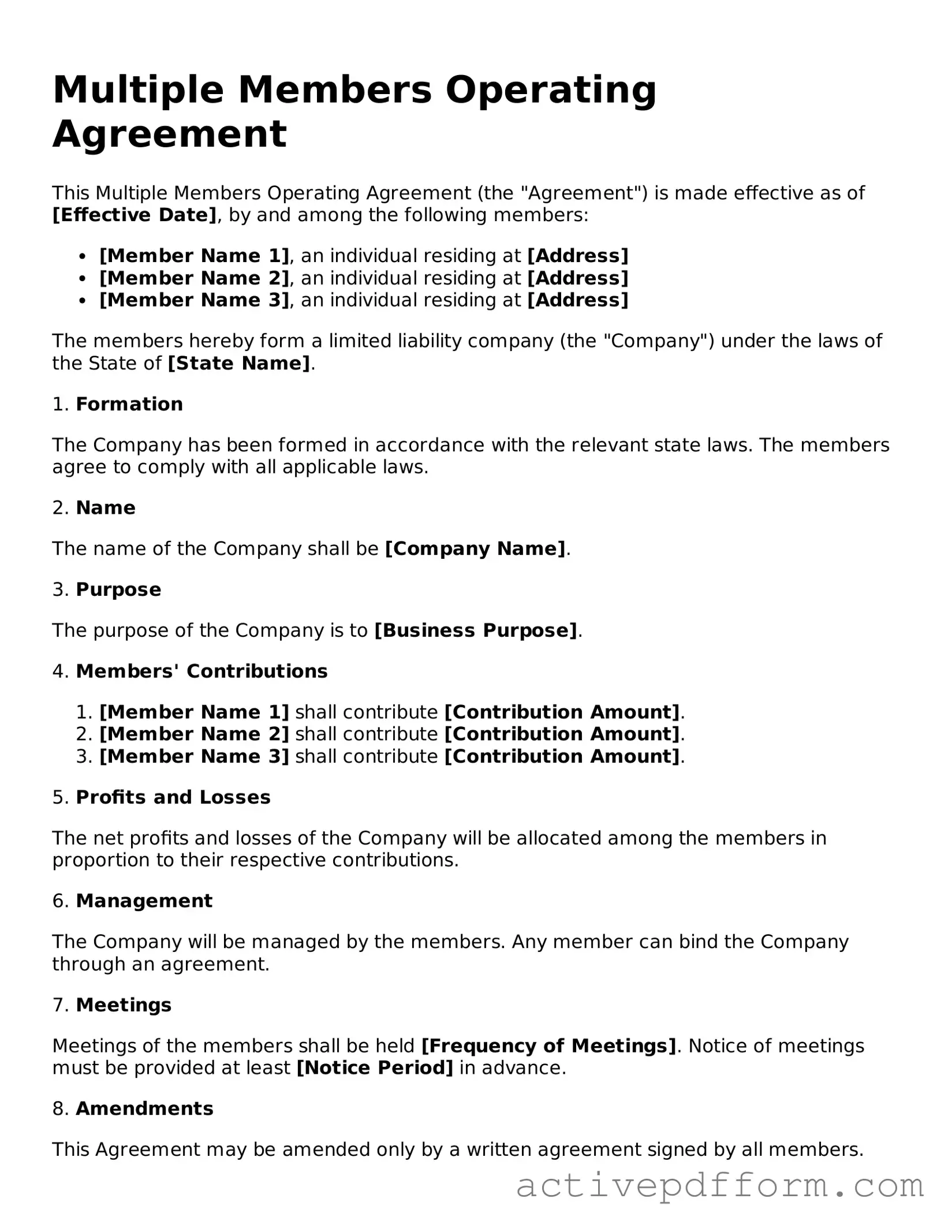What is a Multiple Members Operating Agreement?
A Multiple Members Operating Agreement is a legal document that outlines the management structure, responsibilities, and operational procedures of a multi-member limited liability company (LLC). This agreement serves as a foundational guideline for how the business will be run, ensuring that all members are on the same page regarding their roles and the direction of the company.
Why do I need an Operating Agreement for my LLC?
Having an Operating Agreement is crucial for several reasons. First, it helps to clarify the rights and responsibilities of each member, reducing the likelihood of disputes. Second, it provides a framework for decision-making and profit distribution. Lastly, in many states, having an Operating Agreement can help reinforce the limited liability status of the LLC, protecting personal assets from business debts.
What should be included in a Multiple Members Operating Agreement?
Typically, a comprehensive Operating Agreement will include details such as the purpose of the LLC, the roles and responsibilities of each member, the process for adding or removing members, profit and loss distribution, decision-making procedures, and guidelines for resolving disputes. Additionally, it may outline the process for dissolving the LLC if necessary.
Is it mandatory to have an Operating Agreement in all states?
While not all states require an Operating Agreement for LLCs, it is highly recommended. Some states may default to statutory provisions if no agreement is in place, which may not align with the members' intentions. Therefore, having a tailored Operating Agreement helps ensure that the business operates according to the members’ specific wishes.
Can I create my own Operating Agreement?
Yes, you can certainly draft your own Operating Agreement. However, it is advisable to consult with a legal professional to ensure that the document complies with state laws and adequately addresses the needs of your business. A well-crafted agreement can prevent misunderstandings and legal issues down the line.
How do members make decisions according to the Operating Agreement?
The Operating Agreement should specify the decision-making process, which can vary based on the structure of the LLC. It may require a simple majority vote, a unanimous decision, or a different threshold based on the importance of the decision. Clearly outlining this process helps streamline operations and avoids confusion during critical moments.
What happens if a member wants to leave the LLC?
The Operating Agreement should include provisions regarding the exit of a member. This can cover the process for notifying other members, the valuation of the departing member's interest, and any buyout procedures. Addressing these issues in advance can mitigate potential conflicts and ensure a smooth transition.
Can the Operating Agreement be amended?
Yes, the Operating Agreement can be amended, but the process for doing so should be clearly defined within the document. Typically, amendments require a certain percentage of member approval. This flexibility allows the LLC to adapt to changing circumstances or member needs over time.
What if there is a dispute among members?
The Operating Agreement should provide a framework for resolving disputes, which may include mediation or arbitration processes. By outlining these procedures in advance, members can avoid lengthy and costly litigation, fostering a more harmonious business environment.
Is an Operating Agreement a public document?
No, an Operating Agreement is generally considered a private document and is not required to be filed with the state. This confidentiality allows members to maintain control over their business operations without public scrutiny. However, it is essential to keep the document accessible to all members for reference and compliance purposes.
